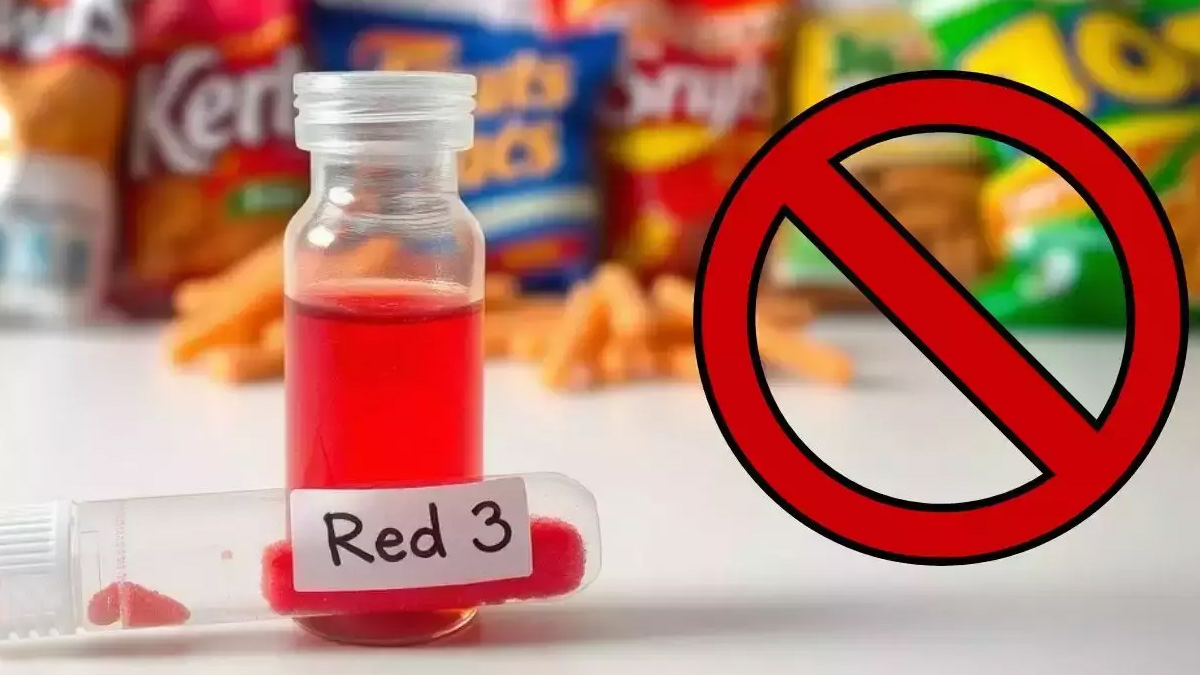-1733829431345.webp)
The use of synthetic food dyes, especially artificial red dyes like Red No. 3 and Red No. 40, has been a topic of health debates for decades. These additives, present in many foods and drinks, have raised concerns among scientists, parents, and lawmakers due to potential health risks, particularly for children. Now, the Food and Drug Administration (FDA) may finally be taking steps to ban these dyes, reflecting growing concerns about their safety. This potential move comes after years of advocacy and legislative pressure, signaling a major shift in food safety policy.
Table of Content:-
Why Are Artificial Red Dyes Under Scrutiny?
Artificial food dyes are widely used to enhance the color and visual appeal of beverages, snacks, cereals, and candies. Red No. 3, also known as erythrosine, and Red No. 40, or Allura Red AC, are among the most commonly used synthetic colorants. However, both dyes are derived from petroleum, and numerous studies have linked them to health issues, including hyperactivity in children and potential cancer risks.
In fact, Red No. 3 has already been banned from use in cosmetics and topical drugs since 1990 under the Delaney Clause due to its carcinogenic effects in animal studies. Yet, it remains approved for food and drinks, creating an inconsistency in regulation. Critics argue that if a substance is deemed unsafe for topical use, it should not be permitted for consumption.
-1733829686585.jpg)
Senate Hearing Prompts FDA Action
At a recent Senate Health, Education, Labor, and Pensions Committee hearing, FDA Deputy Commissioner for Human Foods Jim Jones acknowledged that the safety of Red No. 40 has not been reassessed in over a decade. He revealed that the FDA is currently reviewing a petition to revoke the approval of Red No. 3 and indicated a decision could be imminent.
The renewed scrutiny comes amid calls from lawmakers like Frank Pallone Jr., who has urged the FDA to take swift action. Pallone expressed concern over the continued presence of these dyes in holiday treats consumed by children, emphasizing the hidden dangers they pose.
Also Read: Noida Startup Fires Employees Over 'Stress' Claims: Tips to Recover from Work Stress
Potential Health Risks and Conflicting Evidence
Research on the effects of synthetic food dyes has produced mixed results, but the evidence pointing to risks cannot be ignored. Some studies suggest that artificial dyes may contribute to hyperactivity and other neurobehavioral issues in children who are sensitive to these substances. A 2021 review by the California Office of Environmental Health Hazard Assessment concluded that synthetic food dyes can indeed cause hyperactivity and behavioral problems in some children.
While the FDA has maintained that approved dyes are safe when used according to guidelines, critics highlight the agency's lack of post-market review. In contrast, European nations have adopted the precautionary principle, placing stricter controls or requiring warning labels for food products containing artificial dyes. For example, the European Union mandates labels indicating that certain dyes may negatively impact children’s attention and activity levels.

State-Level Initiatives Push for Change
Several U.S. states are not waiting for federal action and have moved forward with their own bans on synthetic dyes. California passed the School Food Safety Act in 2023, prohibiting the use of six synthetic dyes, including Red No. 3 and Red No. 40, in public schools by 2027. Similarly, Illinois and New York have introduced legislation to ban Red No. 3 in food products within the next few years.
These state-level efforts put pressure on manufacturers to reformulate their products nationwide. Companies like Kraft and Nestlé have already removed artificial dyes from some of their offerings in response to consumer demand.
Also Read: Vietnam Reports 4 Influenza-Related Deaths; Health Ministry Ramps Up Surveillance Measures
Comparing the U.S. with Europe
The U.S. lags behind Europe in terms of regulating synthetic dyes. While the European Food Safety Authority (EFSA) has taken a cautious approach by restricting or labeling certain dyes, the FDA has been slower to act. The lack of mandatory post-market reviews in the U.S. has allowed potentially harmful additives to remain in the food supply for decades.
Former FDA officials and public health experts argue that more resources and regulatory mandates are needed to keep up with scientific advancements and ensure consumer safety. The proposed enhancements discussed in the FDA’s public meeting in September could pave the way for stricter evaluations and possible bans on synthetic food dyes.
Bottomline
If the FDA decides to ban Red No. 3 or Red No. 40, it would mark a significant step toward aligning U.S. food safety regulations with international standards. The move would likely prompt manufacturers to seek safer, natural alternatives to artificial dyes, benefiting public health, especially for children.
Ultimately, the debate over artificial food dyes underscores the need for vigilant, science-based regulation and the importance of prioritizing consumer safety over marketing aesthetics. As the FDA re-evaluates these synthetic additives, the potential ban could signal a healthier future for American food products.
Also watch this video
Read Next
US Flu Cases Spike Ahead of Holidays: CDC Warns Low Vaccination Rates Could Worsen Outbreak
How we keep this article up to date:
We work with experts and keep a close eye on the latest in health and wellness. Whenever there is a new research or helpful information, we update our articles with accurate and useful advice.
Current Version